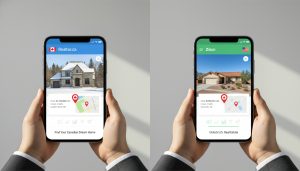How do I make insurance claims after an
incident?
Want your insurance claim paid quickly after an incident? Read this and act.
Quick answer: file, document, call, follow-up
After an incident—car crash, water leak, theft—your goal is simple: get your claim accepted and paid fast. Follow these exact steps. No fluff.
Step 1 — Secure safety and call emergency services
First priority: people. Call 911 if anyone’s hurt. For property damage, stop further loss when safe (shut off water, cover broken windows). This protects your claim.
Step 2 — Notify your insurer immediately
Call your insurance company or use their app within 24 hours. Say: “I need to open a claim.” Give date, time, location, brief description, and policy number. This starts the official timeline.

Step 3 — Document everything for your insurance claim
Take photos and video of damage, scene, and any relevant items. Record the other party’s details for auto claims: name, phone, plate, insurer. Save receipts for emergency repairs. Keep a damage log with timestamps.
Step 4 — File the claim: forms, phone, or online portal
Most insurers accept online or phone claims. Upload photos, police report, and receipts. Fill every field accurately. Missing info delays payment.
Step 5 — Meet the adjuster and provide evidence
An adjuster may inspect. Be cooperative and organized. Give them your photos, receipts, police report, and the damage log. Point out immediate fixes you paid for and provide receipts.
Step 6 — Understand your coverage and deductible
Know what your policy covers: collision, comprehensive, liability, property, or business interruption. Confirm your deductible amount and whether repairs or replacement apply.

Step 7 — Get repair estimates and keep communication clear
Obtain at least two repair estimates. Don’t authorize major work without insurer approval unless it’s an emergency. Ask for written authorization and expected payout timeline.
Step 8 — Track progress and push for action
Insurers move on timelines. If you don’t hear back in 48–72 hours, call back. Document every call with date, time, and agent name. Follow-up moves claims forward.
Step 9 — If denied, escalate with evidence
If your claim is denied, request a written denial and the reason. Provide missing documentation. If unresolved, escalate to supervisor, file an internal appeal, or contact your provincial regulator.
Why work with an experienced local agent
A seasoned local expert reduces delays, gets accurate estimates, and negotiates with adjusters. I position clients for faster approvals and fair payouts.
If you want direct help filing a claim, call or email for immediate, no-nonsense support.
Tony Sousa — Local Realtor & Insurance Claims Advisor
Email: tony@sousasells.ca | Phone: 416-477-2620 | https://www.sousasells.ca
Keywords: insurance claims, how to file an insurance claim, insurance claim process, emergency repairs, adjuster, deductible, home insurance, auto insurance, property claim, liability claim





















